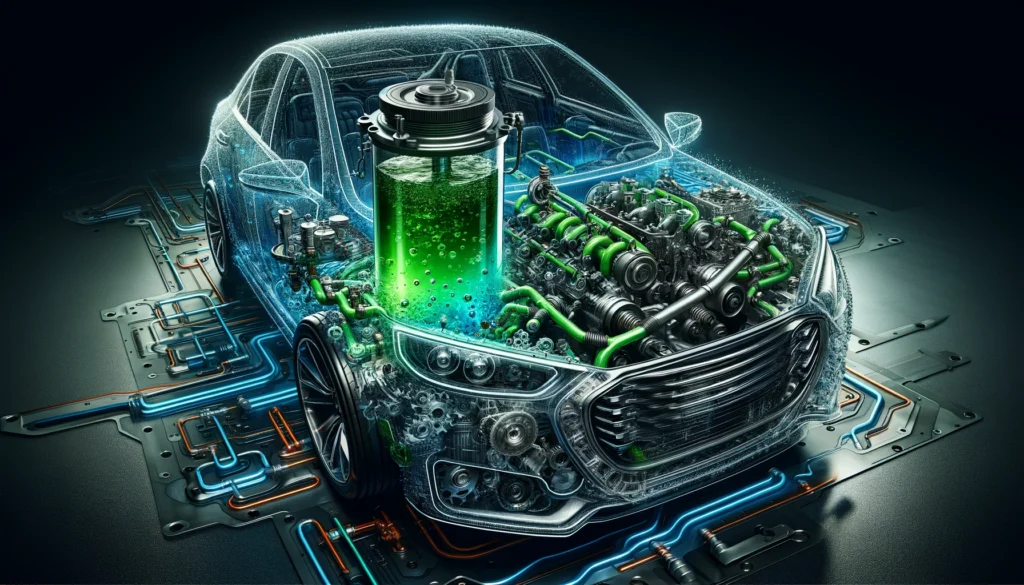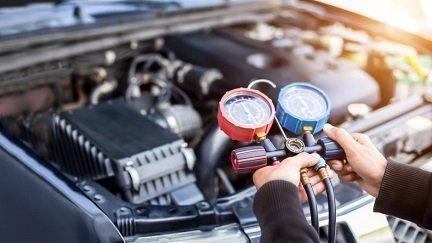Cooling system flush cost is an important factor in keeping your vehicle’s engine running efficiently and lasting longer. Maintaining the cooling system in top condition is key to performance and avoiding costly repairs. A cooling system flush is one of the most crucial maintenance services to consider. Knowing the cost of a cooling system flush and the factors that influence it helps you plan your budget wisely. This article explores five critical price factors in 2025, along with related terms like radiator flush, coolant replacement, and engine cooling system maintenance to guide you through this essential service.
1. Vehicle Make and Model
The cooling system flush cost varies significantly based on your vehicle’s make and model. Different vehicles have different cooling system sizes and complexities, which affect both the amount of coolant needed and the labor involved. For example:
- Compact sedans typically have smaller radiators and less coolant volume, which means service is quicker and less costly.
- Cooling systems of luxury vehicles, sports cars, and trucks may be more elaborate, or hold more coolant, than those of compact cars.
- There are specialised coolant liquids more expensive that need to be used with some high performance or European models.
Therefore, always check your vehicle’s specifications and recall that your make and model are a major cost factor when scheduling a cooling system flush.
2. Type and Quality of Coolant Used
Another key factor influencing cooling system flush cost is the type of coolant used:
- OEM (Original Equipment Manufacturer) Coolant: This is the dealer installed version of coolant, and is approved for your vehicle. They maintain compatibility and optimize performance but are more expensive.
- Universal Aftermarket Coolants: Many independent shops utilize more universal aftermarket coolants that are made for many types of vehicles, but tend to be cheaper. These coolants also usually use effective anti-corrosive property, but the chemical formulation may differ.
- Extended-Life Coolants: Some vehicles require extended-life or hybrid organic acid technology (HOAT) coolants that last longer, reducing the need for frequent flushes but increasing upfront cost.
Selecting the correctly coolant is very important since wrong fluids can corrode and damage your engine cooling system.

3. Labor Costs and Service Location
Labor rates account for a large part of the cooling system flush cost. Industry averages for this service range widely based on geographic location and service provider:
- Dealerships: Typically have higher hourly rates owing to brand-prepared techs, custom equipment, and factory fluids. Expect greater costs but thorough service including inspection of many vehicle parts.
- Neighborhood Garages: Often offer reasonable prices with qualified mechanics. While pay is lower, fluid quality may fluctuate as per each shop’s rules.
- Quick Lube and Chains: Costs are more budget-friendly, but help might be swifter and less detailed.
Regional gaps also matter; wages in urban zones tend to be higher than in rural areas.
4. Additional Cooling System Services and Repairs
When a service is scheduled, a radiator flush usually does reveal underlying issues that could increase the overall price.
- Hose and Radiator Repair: Radiator and Hose repairs can be expensive, however, spending the large cost can lead to positive outcomes in the long run.
- Water Pump Services: In other cases, there are also services that offer the replacement of the water pump, however, it is often less.
- Thermostat Replacement: In the other mechanics designed during working hours, the thermostat is most commonly replaced when not functioning during a flush
- Coolant Sensor: It is also worth noting the sensors that are most likely setting off a unnecessary light usually tend to be the coolant sensors and require repairs.
These repairs add labor and parts costs beyond the base cooling system flush cost. It’s wise to budget extra for potential repairs during service.

5. Coolant Flush Method Used
The exact procedure used can alter the price:
- Basic Drain and Refill: Some shops simply drain old coolant and refill fresh fluid. This is less expensive but doesn’t remove deposits and sludge effectively.
- Full Cooling System Flush: A complete flush involves circulating cleaning chemicals and water to dissolve and remove internal corrosion, rust, and blockages before refilling. This method is more comprehensive and usually more costly but extends the life of your cooling system.
Choosing the full flush option typically results in a higher cooling system flush cost but offers better long-term protection.
Average Cooling System Flush Costs in 2025
Based on the above factors, the average cooling system flush cost in 2025 is generally:
| Service Provider | Typical Cost Range |
|---|---|
| Dealerships | $180 – $250+ |
| Local Auto Repair Shops | $100 – $180 |
| Quick Lube Chains | $80 – $140 |
Prices vary greatly depending on your location, vehicle, and scope of service.
Related Services to Consider
While planning your cooling system flush, consider these related services that help maintain your vehicle’s health:
- Repair or replace corroded or leaking radiators.
- Replace and inspect thermostats.
- Replace and check clamps and hoses.
- Testing concentration to protect against freeze and boil.
- These services help to cool the engine effectively and prevent overheating problems.
Final Tips to Save on Cooling System Flush Cost
- Always look and compare quotes from the chains, local shops, and dealerships.
- Check for coupons or seasonal promotions, especially before summer and winter.
- Schedule the flush along with other maintenance services to maintain a low overall cost.
- Avoid intervals below and above the manufacturer’s recommended to evade unnecessary flushes.
If experienced, a DIY flush is an option but requires careful steps and proper disposal of old coolant.
Conclusion
Understanding the five key factors affecting your cooling system flush cost empowers you to make informed decisions in 2025. From vehicle type and fluid quality to labor rates and additional repairs, these variables shape your total expense.
Regular automotive cooling system maintenance, including regular flush from a dealership or a mechanic, saves your engine from running too hot or failing altogether, keeping your car more valuable and reliable for longer.
As always, consult your manual and your trusted service providers to find the sweet spot between cost, quality, and the care of your vehicle.

[…] How much is a coolant flush—that’s a question almost every car owner asks at some point. If you’ve ever noticed your car running hotter than usual, smelled a sweet antifreeze odor from under the hood, or spotted bright-colored fluid on the ground, your vehicle may be telling you it’s overdue for this essential service. While many drivers put off coolant maintenance, the truth is that ignoring it can lead to expensive repairs down the road. […]